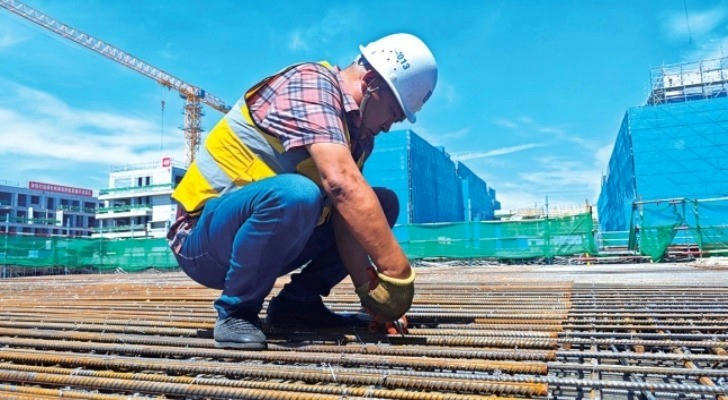Analysis of the Training Outline for Rebar Workers
In the construction industry, rebar workers play a vital role. In order to train qualified rebar workers, a complete training outline is essential.
1.Clarify the training objectives
The training aims to enable students to master the basic knowledge and skills of rebar workers, be able to independently complete the processing and binding of rebars, and ensure the quality and safety of construction. This points out the direction for students' learning and allows them to clearly know the level they should reach after training.

2.Enrich the training content
1.Basic knowledge of rebar workers
• Basic knowledge of building structures: understand the types, composition and force characteristics of building structures, and lay a solid theoretical foundation for subsequent rebar work. For example, after learning, student Xiao Li understood the requirements of different structures for the arrangement of rebars, and can better cooperate with the overall building design in actual work.
• Types, specifications and performance of rebars: Familiar with the uses and characteristics of different types of rebars, student Xiao Wang can accurately select suitable rebars according to construction needs through learning, avoiding waste and incorrect use of materials.
• Construction specifications and standards for rebar engineering: master the construction requirements and quality standards of rebar engineering to ensure that the project meets industry specifications.
2.Rebar processing
• Rebar cutting: Learn to calculate the length of rebar cutting according to the construction drawings. In actual operation, student Xiao Zhang was able to accurately calculate the cutting length through repeated practice, which improved work efficiency.
• Rebar straightening: Master the method and equipment operation of rebar straightening.
• Rebar cutting: Correctly use the rebar cutting machine for cutting operation.
• Rebar bending: Master the operation of the rebar bending machine and make rebars of various shapes.
3.Rebar binding
• Rebar binding tools and materials: Know the tools and materials required for rebar binding.
• Rebar binding methods: Learn the rebar binding methods for different structural parts, such as beams, columns, slabs, walls, etc. After learning, student Xiao Zhao was able to skillfully bind different parts to ensure the stability of the structure.
• Rebar spacing and protective layer control: Ensure that the spacing and protective layer of the rebar meet the requirements of the specifications.
4.Safety and quality control
• Safety operating procedures: Strictly abide by the safety operating procedures of rebar workers to prevent accidents. During the training, student Xiao Sun deeply realized the importance of safety, always remained vigilant at work, and avoided the occurrence of safety accidents.
• Quality control points: Master the quality control points of steel bar engineering, conduct self-inspection and mutual inspection.
• Common quality problems and treatment methods: Understand the common quality problems in steel bar engineering and learn how to deal with them.
5.Practical operation training
• Conduct practical operation training of steel bar processing and binding at a simulated construction site. Through practical operation, improve the skill level and operation proficiency of students.

3.Diverse training methods
1.Theoretical teaching: Use classroom lectures, multimedia teaching and other methods to explain the basic knowledge and skills of steel bar workers.
2.Practical operation: Arrange students to conduct operation training of steel bar processing and binding at actual construction sites or simulated sites.
3.Case analysis: Through analyzing cases in actual projects, deepen students' understanding of steel bar engineering quality and safety issues.
4.Assessment and evaluation: Use a combination of theoretical examinations and practical operation assessments to evaluate students' learning outcomes.

4. Determine the training time and location
Clarify the specific training time and detailed training address to provide students with a convenient learning environment.
5.Professional training teachers
The training teachers are steel bar technicians or engineers with rich practical experience and teaching experience to ensure the quality of teaching.
6.Strict assessment and certification
1.Assessment method: theoretical examination and practical operation assessment.
2.Assessment standards: Assessment in accordance with the requirements of national vocational skill standards and training outlines.
3.Certification: Those who pass the assessment will be issued a professional qualification certificate for steel bar workers.
Through such a comprehensive training outline for steel bar workers, professional steel bar workers can be effectively cultivated and contribute to the development of the construction industry.
